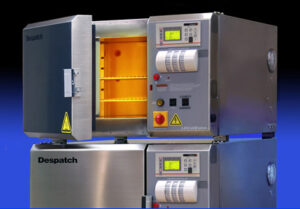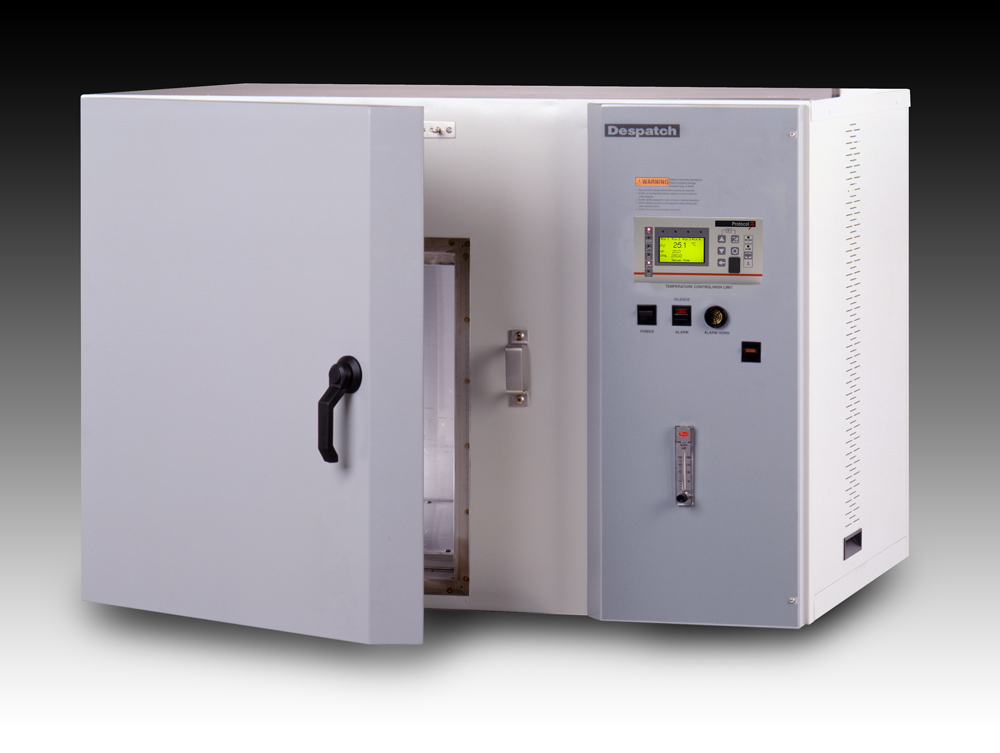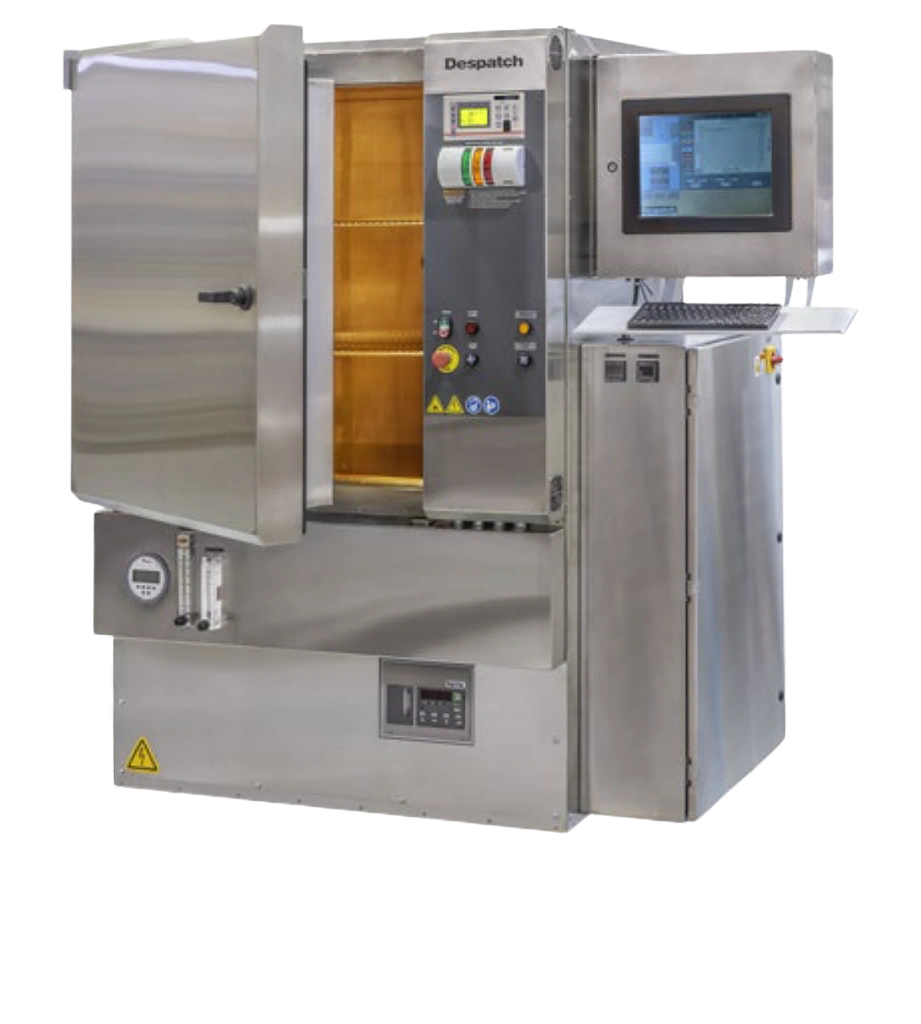Baking plays a pivotal role in PCB assembly applications. Baking is the simplest way to
prevent moisture from derailing the assembly process, which can trap moisture in the printed circuit board during production or be absorbed by the PCB’s laminate material. The moisture can then develop into water vapor/steam and expand during PCB processing, damaging the circuit board or causing circuit failure. Achieving precision baking, however, is easier said than one in electronics manufacturing.
Reflow ovens can help companies achieve precision baking during PCB processing, promoting efficient and reliable PCB assembly. The process also improves quality and adds value. Reflow ovens can take PCB assembly to a whole new level, boosting productivity and increasing efficiency. That, in turn, can boost profitability. But manufacturers need reflow ovens tailored to their needs to generate the kind of precision baking that makes a difference. Working with experienced manufacturers like Despatch can help you find a reflow oven to meet your needs.
This article discusses the benefits of reflow ovens in electronics manufacturing, the types of reflow ovens available, the oven’s function, and the potential features of these ovens.
Critical Benefits of Reflow Ovens in Electronics
- Precise soldering: Reflow ovens provide accurate and consistent temperature control through multiple heating zones. This step allows manufacturers to create tailored temperature profiles that meet the specific requirements of different components and PCBs. This precision ensures optimal solder joint formation and reduces the risk of damage to delicate components due to overheating.
- Reduced defects: A reflow oven’s environment minimizes common soldering defects like tombstoning, bridging, and insufficient solder. This leads to higher-quality and more reliable PCBs with fewer rejects and less rework, as well as reduced manufacturing costs.
- Improved Efficiency: Reflow ovens offer automated and efficient soldering processes. They often use conveyor belts to move PCBs through various temperature zones, streamlining the production line and increasing throughput. Smart controls minimize human error and ensure consistent results, boosting efficiency.
- Increase versatility: Reflow ovens come in various types, such as vacuum reflow ovens and nitrogen reflow ovens, catering to diverse soldering needs. This versatility allows for adapting the process to specific requirements, including those involving specialized atmospheres or sensitive components.
Types of Reflow Ovens for Electronics
Manufacturers use reflow ovens to produce critical electronic products, such as smartphones and tablets, computers and laptops, consumer electronics industrial equipment, and medical devices. They’re available in various configurations, with two main types: convection and infrared. Convection ovens employ heated air circulated within the chamber to transfer heat to the PCB. Infrared ovens utilize infrared radiation from heating elements to heat the PCB directly. Both types help companies achieve efficient and reliable PCB assembly electronics applications.
Reflow ovens use a controlled heating process to melt solder paste applied to designated locations on the PCB. As the PCB travels through the oven on a conveyor belt, the solder paste melts and forms permanent electrical connections between the SMCs and the PCB pads. The ovens also provide a specific temperature profile with multiple zones. That boosts production by ensuring the solder reaches the appropriate molten state and then cools down gradually to form robust and reliable solder joints.
Critical Features of Reflow Ovens
The features required in a reflow oven depend on various factors, including the type of PCBs being assembled, the desired level of automation, and the production volume. Some key features to consider in a reflow oven include:
- Multiple heating zones
- Programmable profiles
- Accurate temperature sensors
- Conveyor belt (with adjustable speed)
- Standard air ovens
- Data logging and monitoring
- Alarms and safety features
- User-friendly interface.
Zone control valves, which allow users to control the airflow in different zones, boosting temperature uniformity, are also an option for reflow ovens.
Electronics manufacturers want ovens that fit their exact needs. Two examples of ovens well-suited for PCB assembly applications that Despatch can configure to match a manufacturer’s needs are its LCC/LCD Clean Process Laboratory Oven and RBC Laboratory Oven for Burn-in Testing. Versatile, flexible, and reliable, both are benchtop ovens and stackable for added capacity in small labs.
One noteworthy example in the world of curing ovens is the Despatch PCO2-14™ Polymide Curing Oven, a high-performance, clean process oven designed specifically for polyimide baking and curing applications. This electrically heated oven meets the specific process requirements for hard baking polyimide coatings in an inert atmosphere. Its ISO Class 5/Class 100 recirculated airflow, pressure relief system, oxygen control system, and process monitoring system allow it to achieve the strict oxygen levels and atmospheric requirements involved in polyimide curing.
The Despatch PCO2-14™ and ovens like it are essential tools in semiconductor manufacturing, ensuring the reliability and functionality of electronic devices through precise temperature control and a controlled environment. They not only meet the demands of polyimide curing but also play a pivotal role in a wide range of semiconductor packaging applications, making them indispensable in the ever-evolving world of electronics.
Precision Baking Promotes Efficient PCB Assembly
Reflow ovens help manufacturers achieve precision baking in electronics manufacturing, promoting high-quality, reliable, and efficient PCB assembly. These unheralded workhorses eliminate moisture on the PCB, improving product quality and adding value. Ideal in electronics manufacturing for soldering surface-mount components (SMCs) onto printed circuit boards, the ovens must be tailored to a manufacturer’s needs to drive benefits. As semiconductor devices become increasingly complex, reflow ovens will play an even greater role in manufacturing advanced chip packaging in the future.
Ready to elevate your PCB assembly process with precision baking? Contact us today to explore tailored solutions with our expert team and maximize your manufacturing efficiency.









